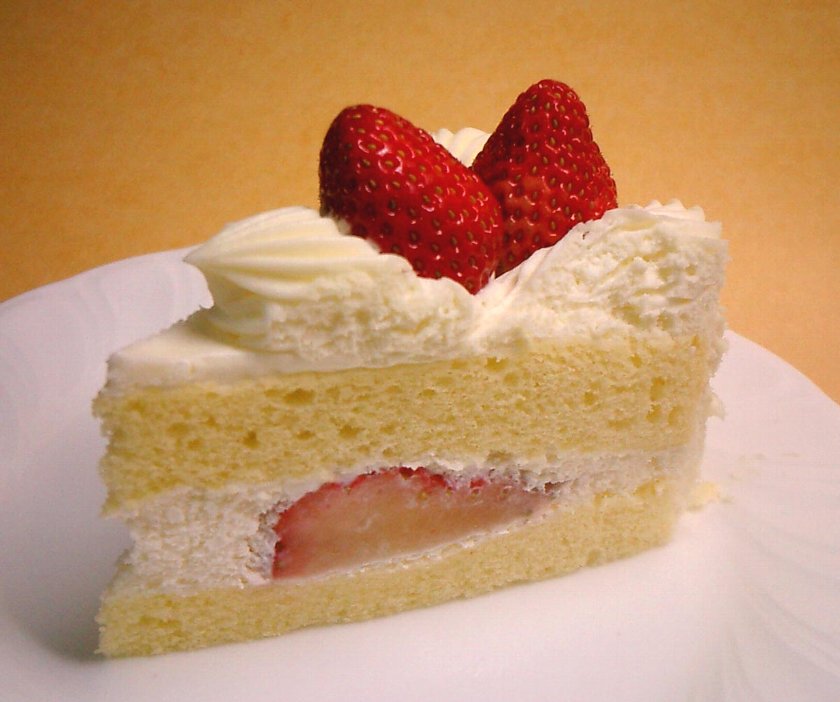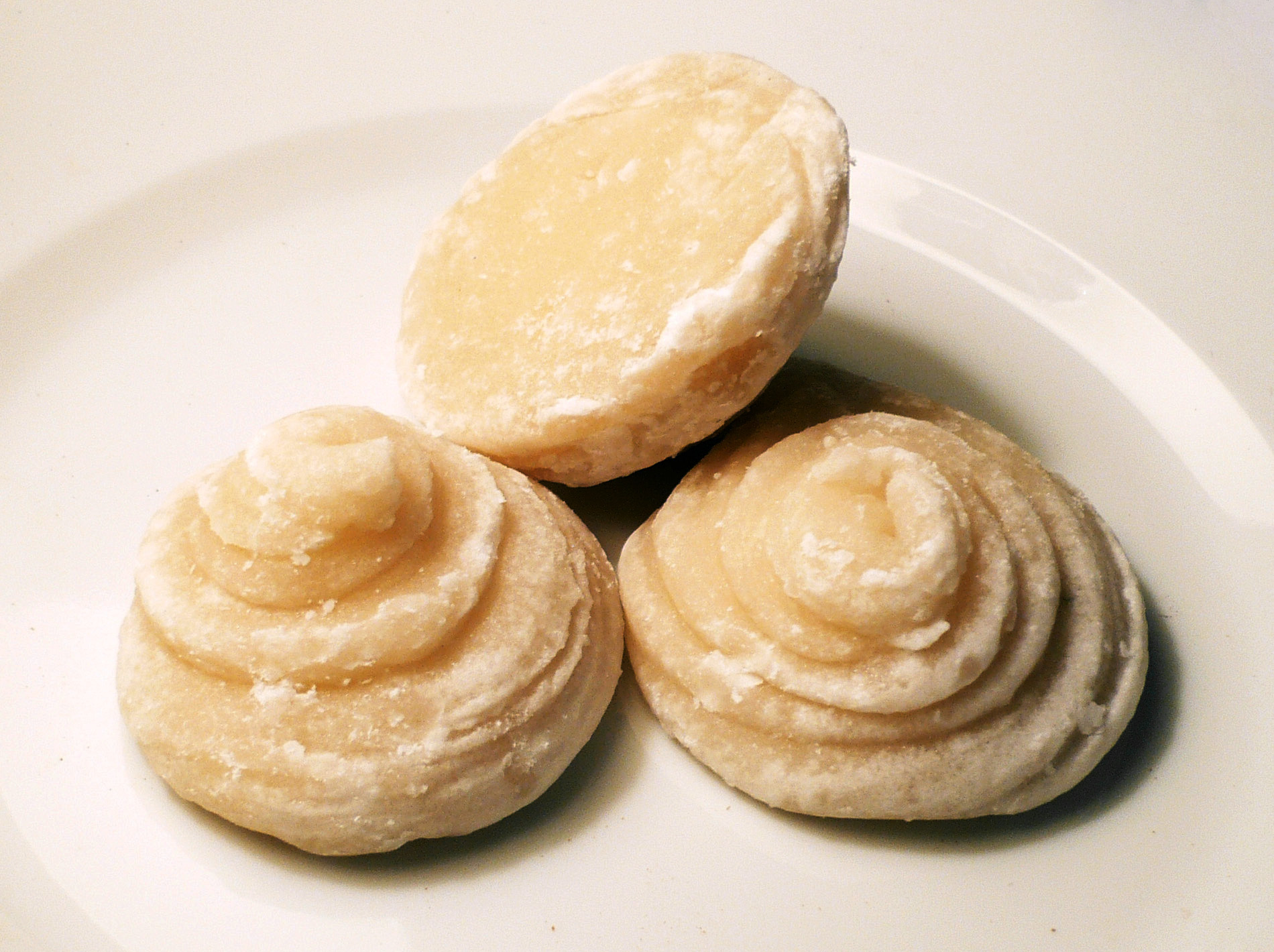|
Dodol Bali
''Dodol'' is a sweet toffee-like sugar palm-based confection commonly found in Southeast Asia and the Indian subcontinent. Originating from the culinary traditions of Indonesia, it is also popular in Malaysia, Singapore, Brunei, the Philippines, Southern India (Southern Coastal Tamil Nadu and Goa), Sri Lanka, Thailand, and Burma, where it is called ''mont kalama''. It is made from coconut milk, jaggery, and rice flour, and is sticky, thick, and sweet. History The term "Dodol" is a word that comes from the Javanese word "Dodol", from the Old Javanese word "Dodol" or "Dwadwal" 'a snack made from sticky rice flour and sugar'. At that time dodol was made using the main ingredients of brown coconut sugar, rice flour and additional flavouring agent such as durian. In the royal banquets during the ancient Mataram Kingdom circa 8th to 11th century, dodol was served as a dessert described as brown-coloured sweet treat. Dodol is mentioned in the Gemekan inscription dated from the y ... [...More Info...] [...Related Items...] OR: [Wikipedia] [Google] [Baidu] |
Balinese Cuisine
Balinese cuisine is a cuisine tradition of Balinese people from the volcanic island of Bali. Using a variety of spices, blended with the fresh vegetables, meat and fish. Part of Indonesian cuisine, it demonstrates indigenous traditions, as well as influences from other Indonesian regional cuisine, Chinese cuisine, Chinese and Indian cuisine, Indian. The island's inhabitants are predominantly Hindu and culinary traditions are somewhat distinct with the rest of Indonesia, with festivals and religious celebrations including many special foods prepared as the offerings for the deities, as well as other dishes consumed communally during the celebrations. Rice, the primary grain is almost always consumed as a staple accompanied with vegetables, meat and seafood. Pork, chicken, fruit, vegetables and seafood are widely utilized, however as in most Hindu communities, beef is never or rarely consumed. Bali is a popular tourist destination, and the area has many cooking schools with daily c ... [...More Info...] [...Related Items...] OR: [Wikipedia] [Google] [Baidu] |
Old Javanese
Old Javanese or Kawi is an Austronesian languages, Austronesian language and the oldest attested phase of the Javanese language. It was natively spoken in the central and eastern part of Java Island, what is now Central Java, Special Region of Yogyakarta, Yogyakarta and East Java Provinces, Indonesia. As a literary language, Kawi was used across Java and on the islands of Madura, Bali, and Lombok. History The oldest example written entirely in Ancient Javanese, called the Sukabumi inscription, is dated 25 March 804 AD. This inscription, located in the district of Kepung in the Kediri Regency of East Java, is a copy of the original, dated some 120 years earlier (only this copy has been preserved). Its contents concern the construction of a dam for an irrigation canal near the river Śrī Hariñjing (now shortened to Srinjing). This inscription is the last of its kind to be written using Pallava script; all consequent examples of Old Javanese are written using Kawi script. De ... [...More Info...] [...Related Items...] OR: [Wikipedia] [Google] [Baidu] |
Eid Ul-Fitr
Eid al-Fitr () is the first of the two main festivals in Islam, the other being Eid al-Adha. It falls on the first day of Shawwal, the tenth month of the Islamic calendar. Eid al-Fitr is celebrated by Muslims worldwide because it marks the end of the month-long dawn-to-dusk fasting (''sawm'') of Ramadan. The holiday is known under various other names in different languages and countries around the world. Eid al-Fitr has a particular that consists of two generally performed in an open field or large hall. It may only be performed in congregation () and features six additional (raising of the hands to the ears whilst reciting the Takbir, saying "Allāhu ʾAkbar", meaning "God is the greatest"). In the Hanafi school of Sunni Islam, there are three at the start of the first and three just before in the second . Other Sunni schools usually have 12 , similarly split in groups of seven and five. In Shia Islam, the has six in the first at the end of , before , and five i ... [...More Info...] [...Related Items...] OR: [Wikipedia] [Google] [Baidu] |
Muslim World
The terms Islamic world and Muslim world commonly refer to the Islamic community, which is also known as the Ummah. This consists of all those who adhere to the religious beliefs, politics, and laws of Islam or to societies in which Islam is practiced. In a modern geopolitical sense, these terms refer to countries in which Islam is widespread, although there are no agreed criteria for inclusion. The term Muslim-majority countries is an alternative often used for the latter sense. The history of the Muslim world spans about 1,400 years and includes a variety of socio-political developments, as well as advances in the arts, science, medicine, philosophy, law, economics and technology during the Islamic Golden Age. Muslims look for guidance to the Quran and believe in the prophetic mission of the Islamic prophet Muhammad, but disagreements on other matters have led to the appearance of different religious schools of thought and sects within Islam. The Islamic conquests, wh ... [...More Info...] [...Related Items...] OR: [Wikipedia] [Google] [Baidu] |
Kalu Dodol
Kalu dodol (, ) is a sweet dish, a type of dodol that is popular in Sri Lanka. The dark and sticky dish consists mainly of kithul jaggery (from the sap of the toddy palm), rice flour and coconut milk. It is difficult and time-consuming to prepare. The Hambanthota area is known for the production of this dish. Origins and history Kalu dodol is believed to have been introduced to Sri Lanka by Indonesian migrants, It has also been attributed to the Portuguese, who occupied parts of the country during the 16th and 17th centuries. With the introduction of artificial ingredients the preparation of kalu dodol has occasionally deviated from the traditional recipes. Kalu dodol, along with other traditional sweets, is commonly prepared and consumed in celebration of the Sinhala New Year. Kalu dodol capital The Hambanthota area in southern Sri Lanka is known for kalu dodol, and is sometimes referred to as the kalu dodol capital. The kalu dodol industry is a major source of income fo ... [...More Info...] [...Related Items...] OR: [Wikipedia] [Google] [Baidu] |
Portuguese Ceylon
Portuguese Ceylon (; ; ) is the name given to the territory on Ceylon, modern-day Sri Lanka, controlled by the Portuguese Empire between 1597 and 1658. Portuguese presence in the island lasted from 1505 to 1658. Their arrival was largely accidental, and the Portuguese sought control of commerce, rather than territory. The Portuguese were later drawn into the internal politics of the island with the political upheaval of the Wijayaba Kollaya, and used these internal divisions to their advantage during the Sinhalese–Portuguese War, first in an attempt to control the production of valuable cinnamon and later of the entire island. Direct Portuguese rule did not begin until after the death of Dharmapala of Kotte, who died without an heir, and had bequeathed the Kingdom of Kotte to the Portuguese monarch in 1580. That allowed the Portuguese sufficient claim to the Kingdom of Kotte upon Dharmapala's death in 1597. Portuguese rule began with much resistance by the local population. Ev ... [...More Info...] [...Related Items...] OR: [Wikipedia] [Google] [Baidu] |
Southern India
South India, also known as Southern India or Peninsular India, is the southern part of the Deccan Peninsula in India encompassing the states of Andhra Pradesh, Karnataka, Kerala, Tamil Nadu and Telangana as well as the union territories of Lakshadweep and Puducherry, occupying 19.31% of India's area () and 20% of India's population. It is bound by the Bay of Bengal in the east, the Arabian Sea in the west and the Indian Ocean in the south. The geography of the region is diverse, with two mountain ranges, the Western and Eastern Ghats, bordering the plateau heartland. The Godavari, Krishna, Kaveri, Penna, Tungabhadra and Vaigai rivers are important non-perennial sources of water. Chennai, Bengaluru, Hyderabad, Coimbatore and Kochi are the largest urban areas in the region. The majority of the people in South India speak at least one of the four major Dravidian languages: Telugu, Tamil, Kannada and Malayalam. During its history, a number of dynastic kingdoms ruled ov ... [...More Info...] [...Related Items...] OR: [Wikipedia] [Google] [Baidu] |
Maritime Southeast Asia
Maritime Southeast Asia comprises the Southeast Asian countries of Brunei, Indonesia, Malaysia, the Philippines, Singapore, and East Timor. The terms Island Southeast Asia and Insular Southeast Asia are sometimes given the same meaning as Maritime Southeast Asia. Other definitions restrict Island Southeast Asia to just the islands between mainland Southeast Asia and the continental shelf of Australia and New Guinea. There is some variability as to whether Taiwan is included in this. Peter Bellwood includes Taiwan in his definition, as did Robert Blust, whilst there are examples that do not. The 16th-century term " East Indies" and the later 19th-century term " Malay Archipelago" are also used to refer to Maritime Southeast Asia. In Indonesia, the Old Javanese term " Nusantara" is also used as a synonym for Maritime Southeast Asia. The term, however, is nationalistic and has shifting boundaries. It usually only encompasses Peninsular Malaysia, the Sunda Islands, Ma ... [...More Info...] [...Related Items...] OR: [Wikipedia] [Google] [Baidu] |
Sweet
Sweetness is a basic taste most commonly perceived when eating foods rich in sugars. Sweet tastes are generally regarded as pleasurable. In addition to sugars like sucrose, many other chemical compounds are sweet, including aldehydes, ketones, and sugar alcohols. Some are sweet at very low concentrations, allowing their use as non-caloric sugar substitutes. Such non-sugar sweeteners include saccharin, aspartame, sucralose and stevia. Other compounds, such as miraculin, may alter perception of sweetness itself. The perceived intensity of sugars and high-potency sweeteners, such as aspartame and neohesperidin dihydrochalcone, are heritable, with gene effect accounting for approximately 30% of the variation. The chemosensory basis for detecting sweetness, which varies between both individuals and species, has only begun to be understood since the late 20th century. One theoretical model of sweetness is the multipoint attachment theory, which involves multiple binding sites be ... [...More Info...] [...Related Items...] OR: [Wikipedia] [Google] [Baidu] |
Palm Sugar
Palm sugar is a sweetener derived from any variety of palm tree. Palm sugar may be qualified by the type of palm, as in coconut palm sugar. While sugars from different palms may have slightly different compositions, all are processed similarly and can be used interchangeably. Types The predominant sources of palm sugar are the Palmyra, date, nipa, aren, and coconut palms. The Palmyra palm (''Borassus'' spp.) is grown in Africa, Asia, and New Guinea. The tree has many uses, such as thatching, hatmaking, timber, a writing material, and in food products. Palm sugar is produced from sap (toddy) from the flowers. There are two species of date palm that produce palm sugar: ''Phoenix dactylifera'' and '' P. sylvestris''. ''P. dactylifera'' is common in the Mediterranean and Middle East, while ''P. sylvestris'' is native to Asia, mainly Pakistan and India. Date palms are cultivated mainly for dates and palm sugar is made from the tree's sap. The nipa palm ('' Nypa fru ... [...More Info...] [...Related Items...] OR: [Wikipedia] [Google] [Baidu] |





